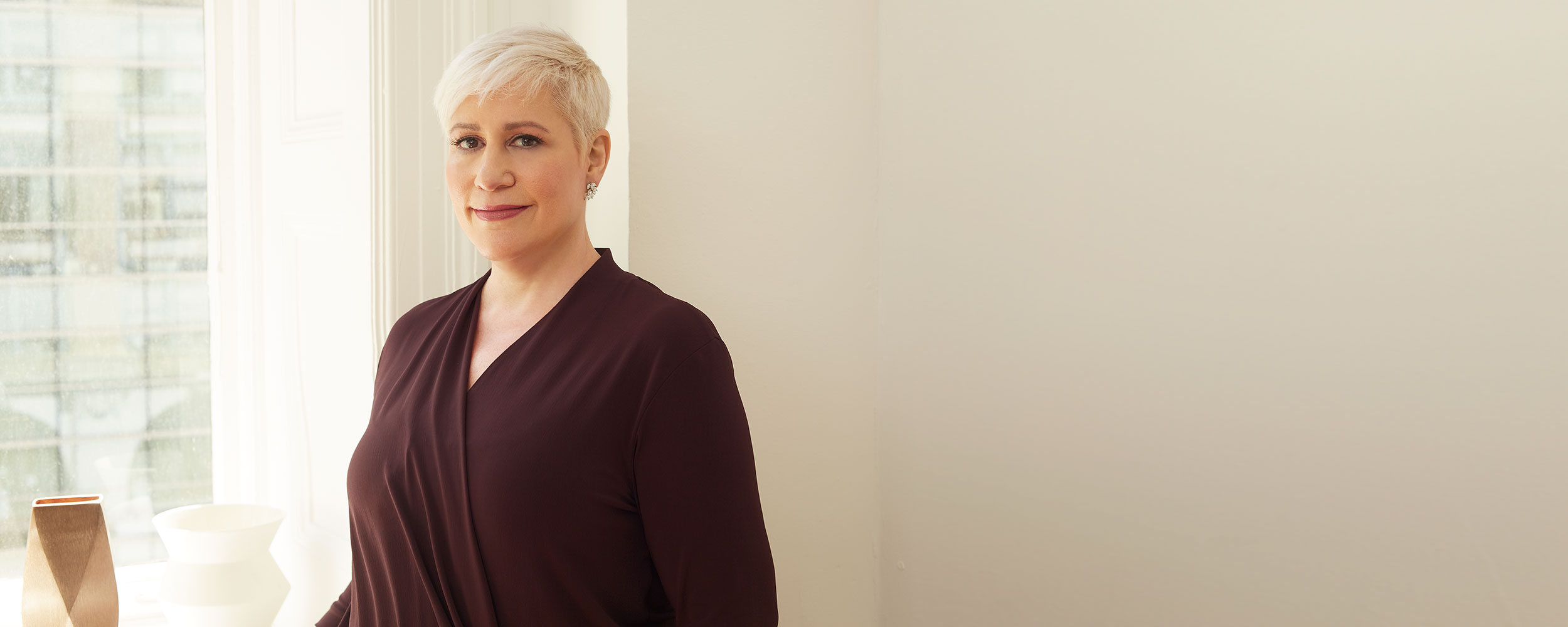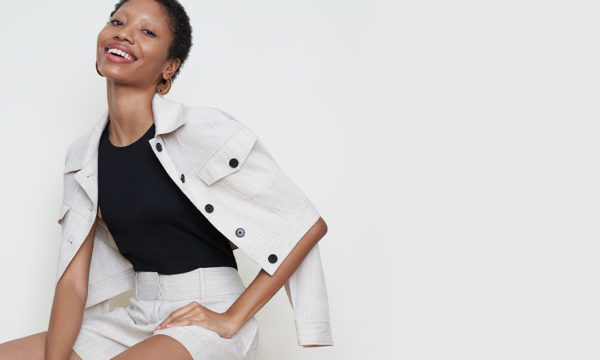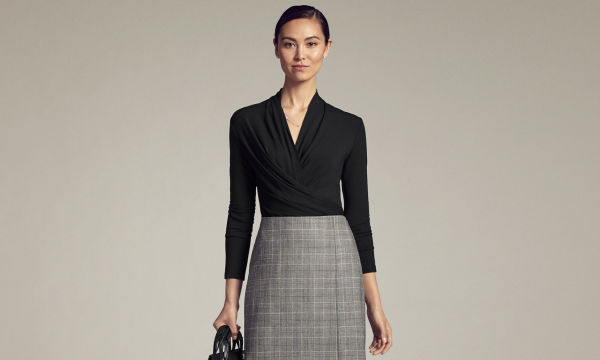The Messages Your Clothes Send: An HR Director Talks Work Outfits
May 26, 2017 | Filed in: Woman of the Week
Sarah Charton, a director of human resources and administration at a Manhattan real estate firm, knows a thing or two about style: Before she climbed the corporate ladder, she studied fashion illustration at Pratt. We had the great pleasure of meeting her at several of MM.LaFleur’s focus groups for First Addition (our new extended size range), where she tried on our samples and gave us her two cents about fit and proportion. Here, she talks about the focus group process, looking “elegantly formidable,” and sending the right wardrobe messages in the workplace.
I WOUND UP AT MM.LAFLEUR’S FOCUS GROUP totally by surprise. I saw your clothing online and emailed to say that I loved your aesthetic, but you don’t carry my size. Then I got a response inviting me to a focus group. I arrived and there was a group of women who were similarly constituted. We were told, “See all those clothes? That’s why you’re here; go try them on and tell us what you think.” We were self-conscious at first, but then it was like kittens with catnip. I tried on the same outfit as someone else at the same time, and we both looked fantastic, and we had this “Holy shit, seriously?” moment together. Being with all those other women was insanely powerful, because we could look at each other in these beautiful clothes and say, “Everyone looks amazing.”
WITH LARGER WOMEN, it’s tough to find clothes for the workplace. Most plus-size brands have such poor construction, with miserable fabric and circus prints. Every day you get dressed and it’s a fresh insult. Above a certain size, there’s more variation when it comes to fit—you might be the same size in terms of number, but the proportions are different. For example, arm holes are often too big for me, but for someone else, it might be too big in the hips. It’s a challenge to make clothes for curvier sizes. But let me tell you: We would love the opportunity to have well-made, beautiful, practical clothes that travel well and look great. Most companies just write it off—they say it’s too hard, and they don’t know how to do it. Some say they don’t have any interest in designing for that woman. Really? They’re the majority of women in the country, and you don’t have any interest in designing for them?
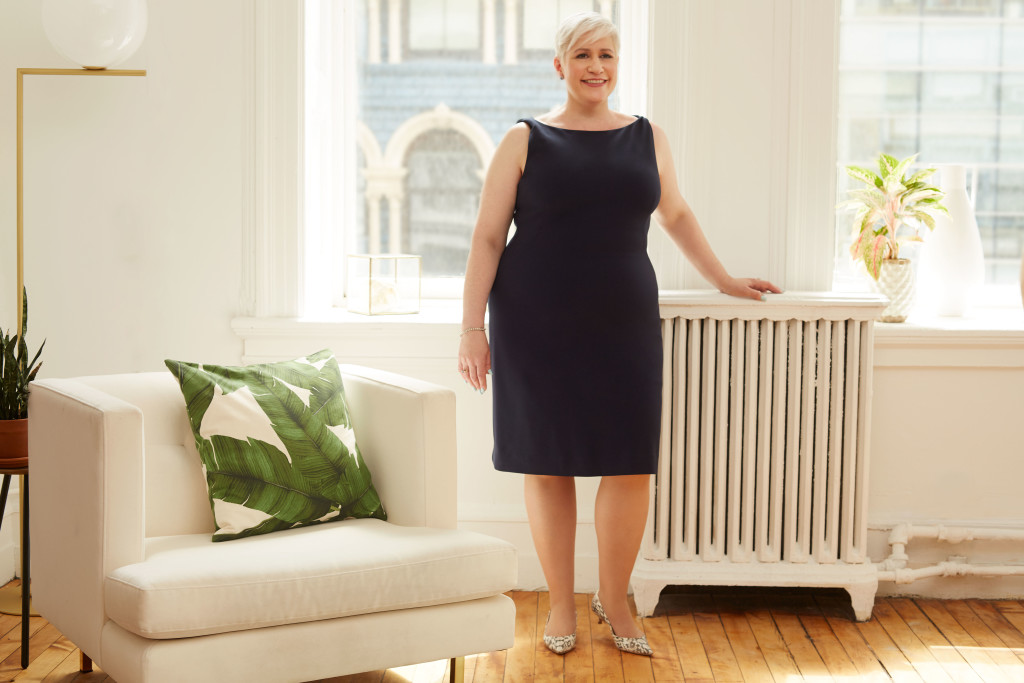
Sarah wears the Lydia dress in galaxy blue.
I’M AN HR DIRECTOR, but I went to school at Pratt for fashion illustration. Unfortunately, I graduated in 1981, which was the dawn of computer graphic design—and I worked in pen, pencil, and ink brush. It was like I’d mastered the horse buggy right when Henry Ford was gearing up. So I ended up drifting into administrative work, and then spent 25 years at law firms. I started out in general management and worked my way up and over into HR. Law firms are tough places to work, and the feedback I got was that I’m tough but fair, and I took that as the highest compliment.
I THINK ILLUSTRATION HELPED my HR career because it requires so much observation. Drawing taught me to look at what people do with their hands, posture, gestures, and expressions. I spent so long studying those things that I’ve developed instincts for body language, and it’s made me a good listener. Someone once told me that your gut instinct is comprised of information you’ve internalized without realizing it, and to recognize that internal voice. It’s usually telling you something important.
WHEN I STARTED AT PRATT, I had an eating disorder, and I got down to 108 pounds. I was supposed to take yoga but couldn’t lie on the floor because every vertebrae stood out and it was too uncomfortable. It wasn’t just about trying to be thin—it was about making my body do what I wanted it to do. My body is not naturally thin. I’m 5’10”, and for me to be a size 14 means 500 calories a day—my body doesn’t want to be there. I’ve done it, but it’s not easy.
GETTING DRESSED FOR WORK is kind of like getting dressed for battle. For men, it’s really easy, relatively speaking. For women it’s more challenging, and for curvier women, it’s Everest. When you look at all of the stupidity we have to shift aside to get ourselves to a place where we can look in the mirror and say, “We’ve got this,” we could use a little help. I’m so grateful for the focus group. It was so empowering. I had recently been thinking, “Should I go back and do that 500-calorie thing again?” And then I thought, “Why? So the construction workers are happier with the view? Whose approval are we seeking here?” I can’t express how thrilled I was to be involved with this project.
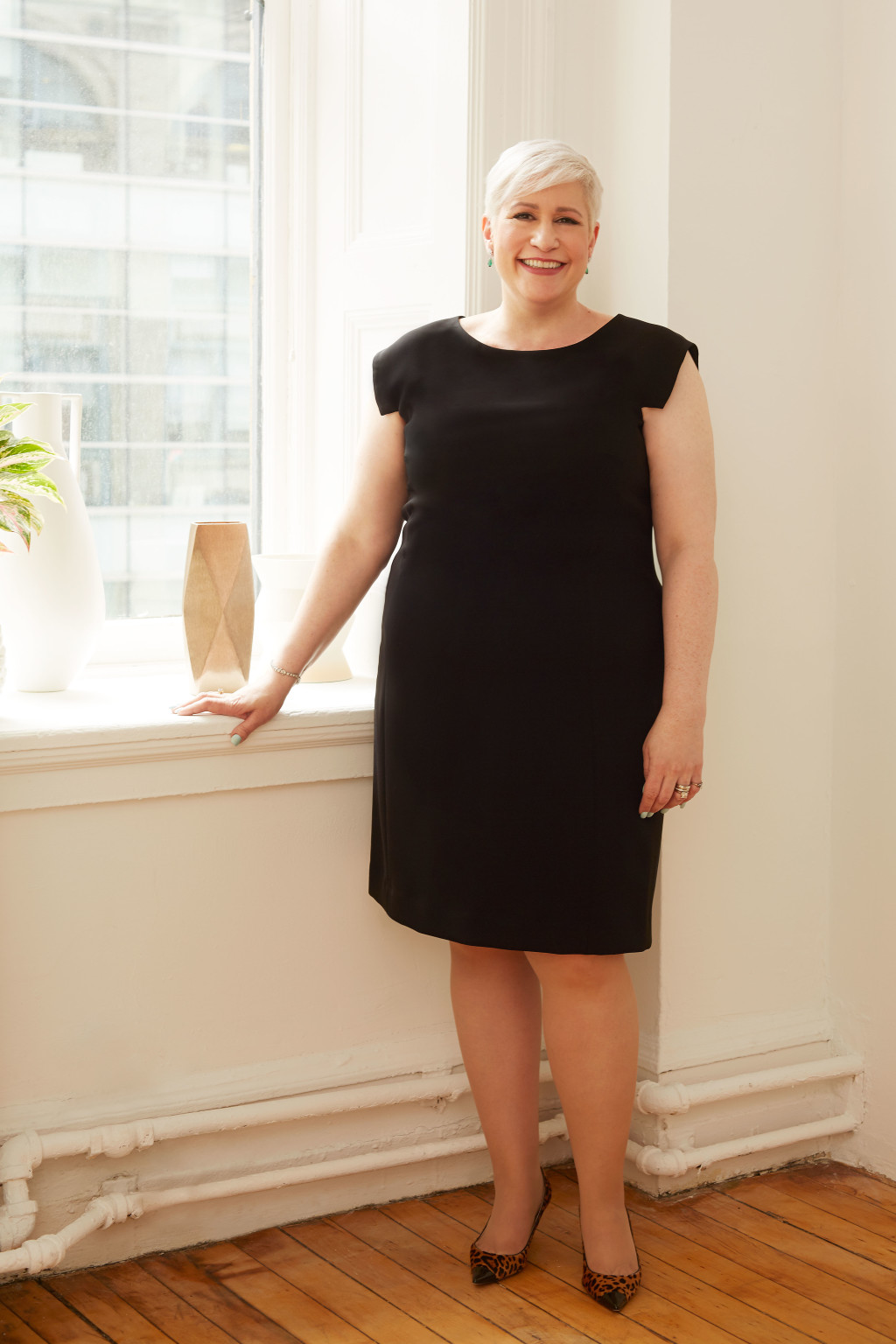
Sarah wears the Sarah dress in black.
I WANT TO LOOK ELEGANTLY FORMIDABLE. I want people to see me and go, “Wow. She’s impressive in every sense of the word, and she means business.” A personal rule for me is no screaming. I believe that speaking softly works much better. When you speak quietly, people have to quiet down to hear you, and then they listen to what you’re actually saying. I don’t want my clothes to have to scream, either. When you’re putting an outfit together, there should be one thing that’s a 10—it could be an outstanding, killer bracelet, for example. Then everything else has to be more subdued and subtle.
WHEN YOU WORK FOR SOMEONE, your employer is paying you not only for your knowledge, skills, and abilities, but also for you to represent them. That means how I dress at work represents the company I work for and how they want to be represented. If that means I can’t wear a tongue bar and a nose stud, then so be it.
CLOTHES ARE ALL ABOUT SENDING A MESSAGE. How do we navigate this incredibly narrow track between not wanting to look like a frumpy grandma, but also not being perceived as trampy? If you put a miniskirt on a very thin model, it sends a different message than if you put it on someone who’s a size 22. That message could be all kinds of things, but in the workplace, the message has to be, “I represent my employer,” and it can’t be overtly sexual. As women, we’re under the microscope all the time, larger women especially. It’s like, “You don’t meet the mainstream aesthetic ideal, and how dare you also be female and talented and driven and successful—you should be walking around in a tent.” The message I want to send is business and competence. I would like to look attractive, too. It’s very hard to achieve these things, but these clothes are a major step.
Photos by Maria Karas.





